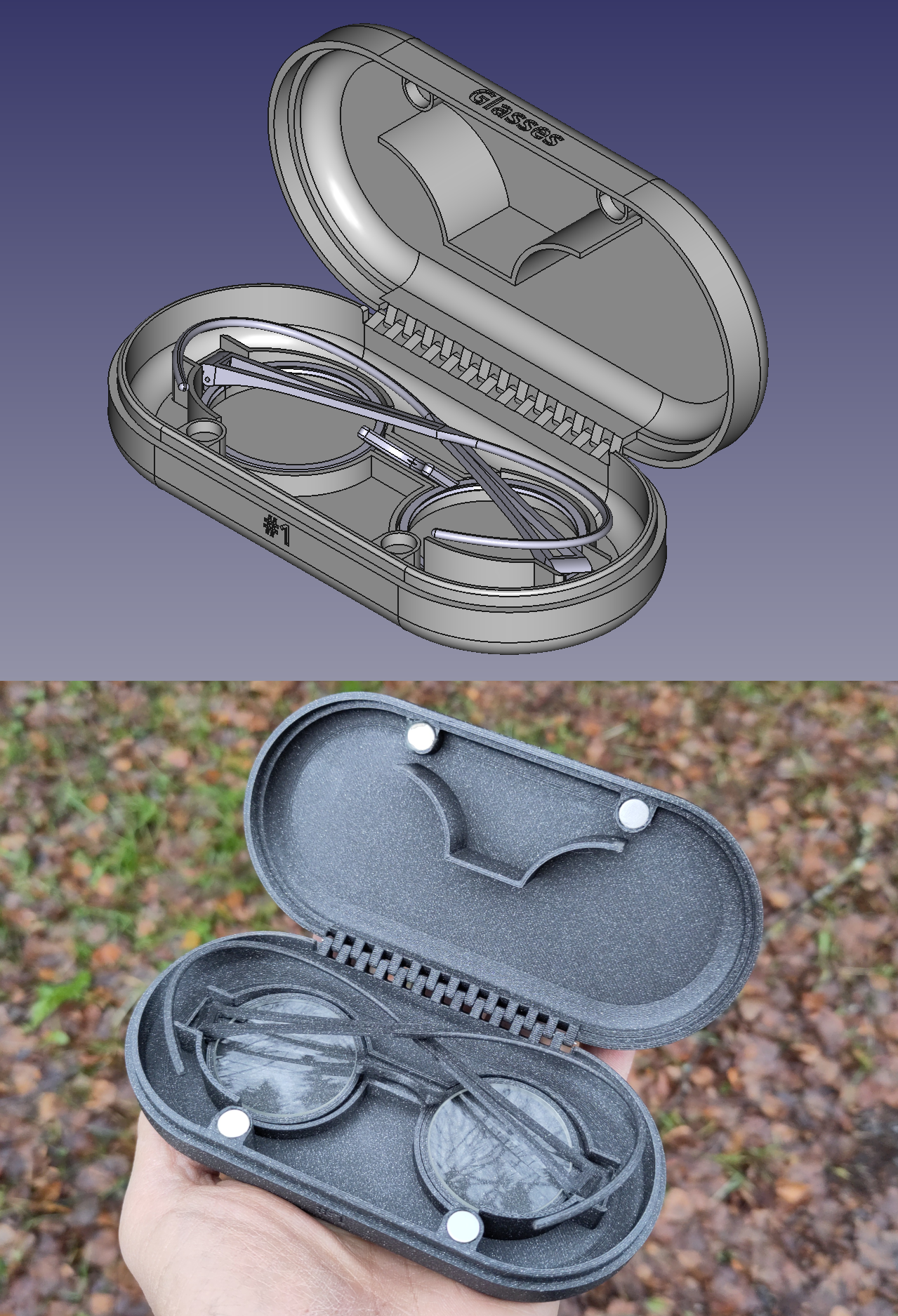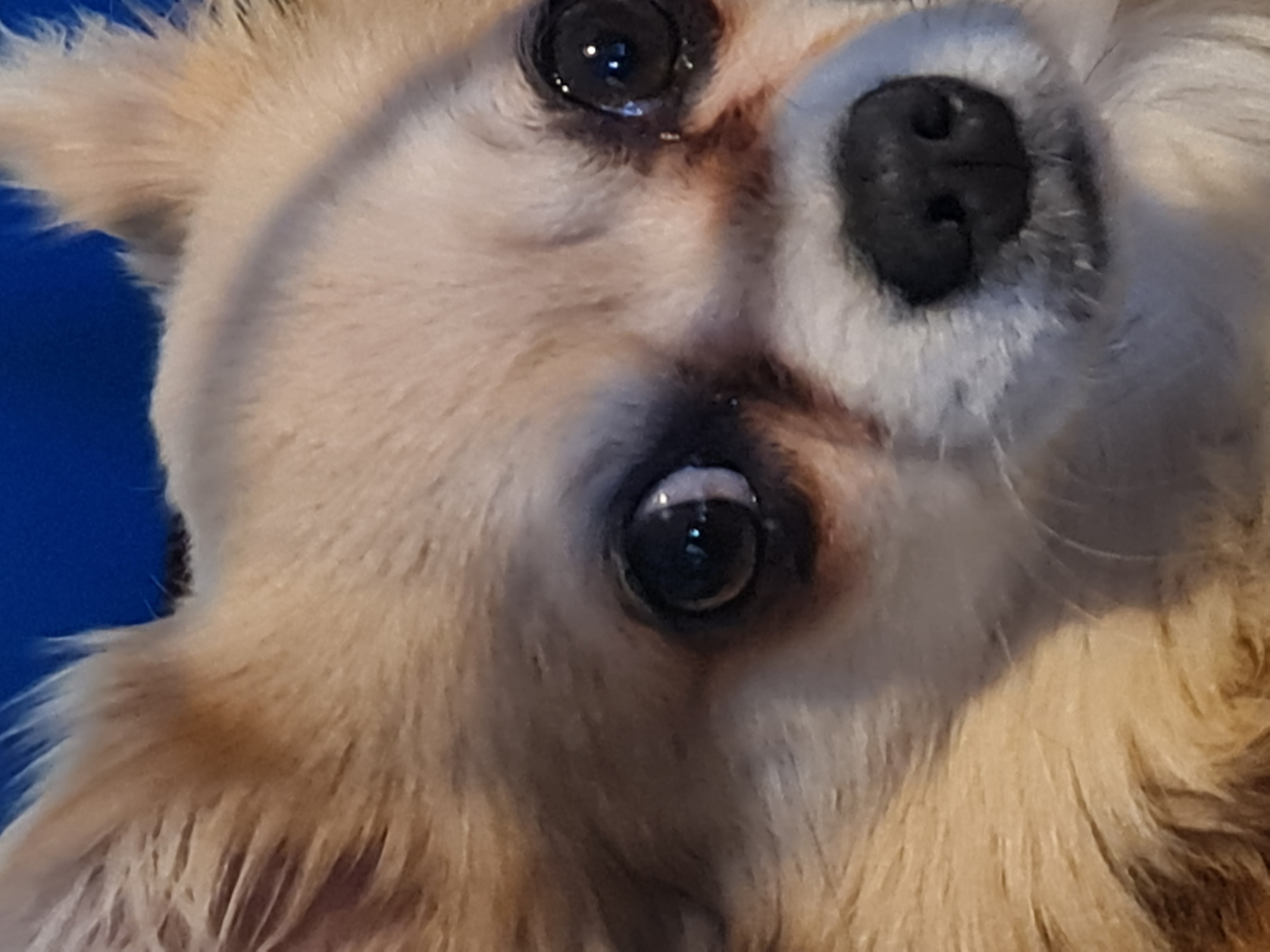I made this custom case for my 3D printed spectacles:

It holds the glasses by the edge of the frames, so the lenses are suspended above the bottom of the case without touching anything and no padding material is necessary to prevent scratching.
And being specially sized for those glasses, the case is no larger than it needs to be.
Did I mention that I love 3D printing? 🙂
Is this hinge 100% 3d printed ?
It has a long piece of 1mm piano wire running through that acts as a spindle. It’s a standard hinge design called a continuous hinge. I suppose I could have 3D-printed the spindle but it would have made the hinge huge and not very nice-looking.
I like the nice snap sound the case makes when it closes👍
btw where did you separately buy the glass and are they prescription glasses?
They’re prescription glasses. They’re my regular glasses I wear every day. I made the frames but I can’t print optical lenses, sadly. I wish I could because they cost a fortune and they’re a real rip-off…
Chinese companies online will sell you real cheap glasses. With RX lenses. Like 10-15 a pair.
The frames are cheap crap. But the lenses normally adequate for anything not to specialised.
That’s kind of my problem: my correction is not simple. I can get near or far lenses with my correction for relatively cheap - like $100 a pair. But progressives are eye-wateringly expensive.
As for my frames, they’re both free and priceless to me because I make them myself. And just because they’re not off the shelf, they’re more rewarding to wear.
cool. I agree with the self made.
Myself, my vision is now at the point glasses no longer help.
I printed a sunglass case sorta like this but way less engineered. Mine also has exposed magnets but curious if you considered embedding them into the print with just a couple bridging layers printed over them? I’ve seen magnet cases like this eventually have the magnet overcome the glue and pull out.
Halting the print to insert the magnets would be problematic: I print on the company’s printer and it’s a 5-hour print, so I start it before going home in the evening to avoid annoying everybody during work hours.
We’re allowed to use the printer for personal prints. But the rule is, if someone arrives at the office and needs to print something for work, whatever private stuff is in the printer is removed to make way for work things. And of course, if the printer is running - or paused waiting for someone to attend to it - the print is cancelled.
So I’d have to arrive really early in the morning to make sure I get there before the most early birds but there are no buses at the wee hours of the morning. Therefore realistically, my long prints need to complete unattended and be ready to be chucked out in the morning if I’m not first to arrive at the office.
But I’m not worried about the magnets coming out: the fit is tight and I use really strong epoxy. I’ve yet to see anything assembled with that stuff come undone.
Looks great - how many versions did you make to get to this?
Thanks!
I just made one initial print but I didn’t leave enough free play in the frame holder at the bottom of that case, so while it worked, it was kind of a pain to insert the frames into it. I widened the play from 0.4 to 1.5 mm and now there’s zero usablility issue.
Another unexpected problem I discovered with that first print is that I couldn’t tell the top shell from the bottom shell when the case was closed. I completely overlooked this and it turned out to be a massive PITA: 50% of the time, I would open the case upside down. Silly eh 🙂 It seems obvious in hindsight.
But I like the symmetry of it. So I added “engraved” text at the front edge to tell if the box is the right way up before opening, and put my name and a description of the particular correction in that case as a bonus.
The rest - stiffness, hinge, lid fit. magnet fit - came out okay the first time out. I’m getting really good at knowing the printer’s tolerances in advance and leaving enough play for things that shouldn’t assemble with an interference fit.
This whole project is cool as fuck.








